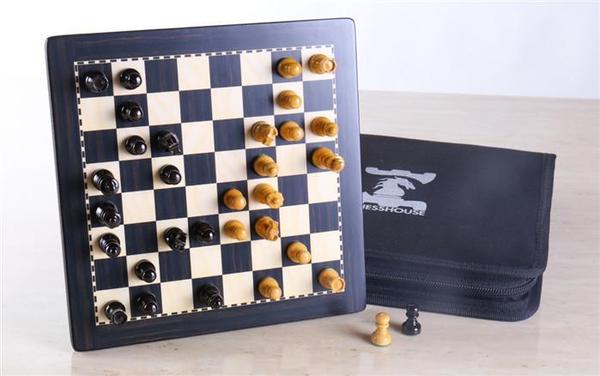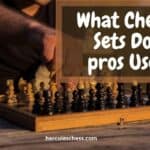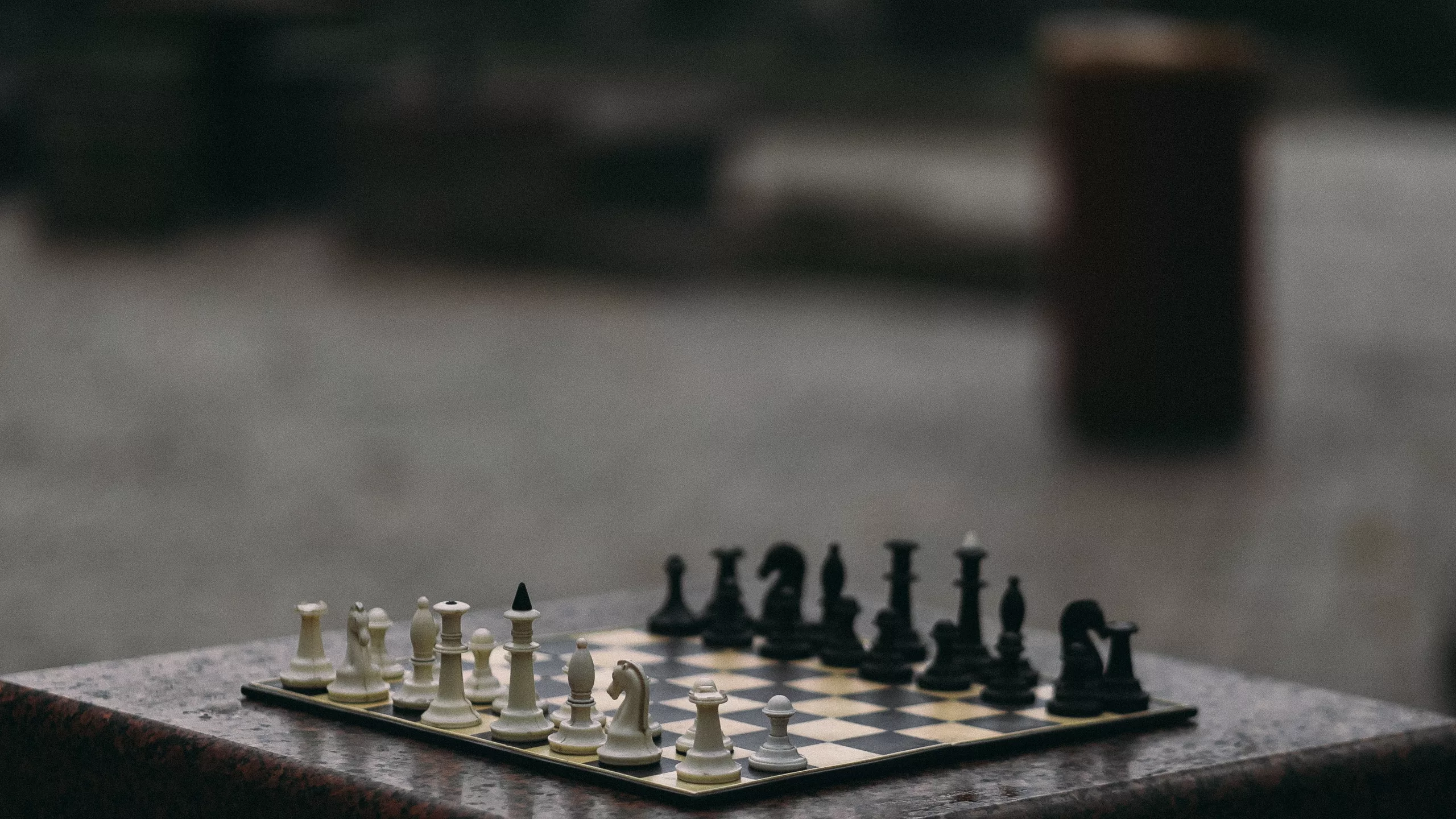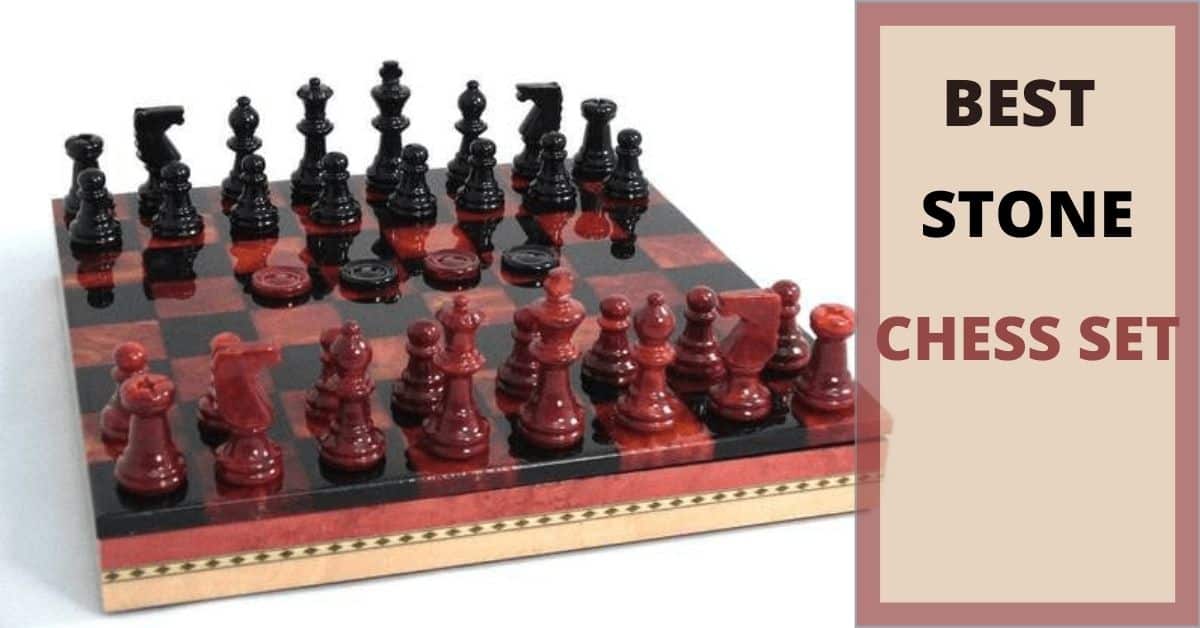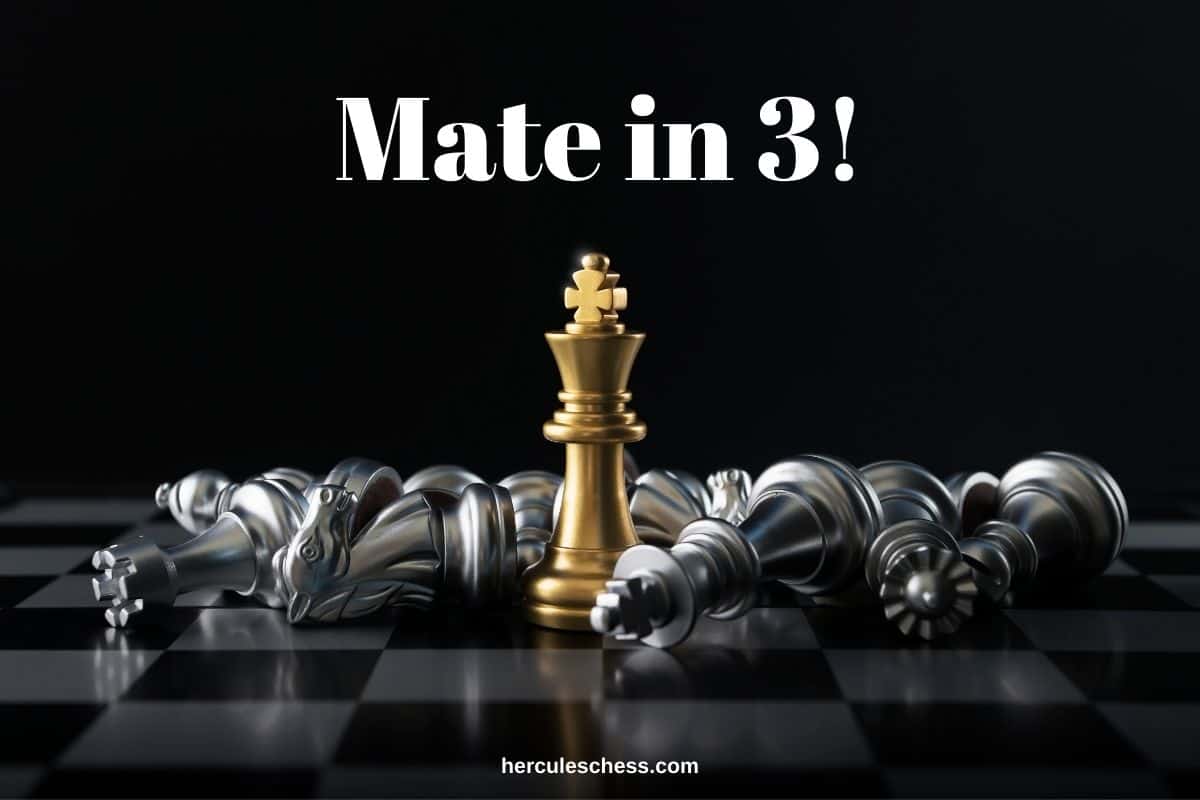Playing chess is not possible without chess equipment. This article will provide preliminary information about chess pieces, sets, clocks, boards, and other important items that are specific to national or international tournaments.
Chess is a game that fits perfectly within any budget. The cost of a chess set ranges from a few dollars (for cardboard and plastic sets) to hundreds of dollars for well-carved sets that appeal to collectors.
Here are 7 chess equipment every player should own:
- Chess Set
- Chess Board
- Chess Table
- Chess Piece
- Chess Clock
- Travel Chess Bag
- Score Sheets
Different Chess Equipment
1. Chess set

The set includes the board plus all other pieces (pawns, bishops, rooks, knights, the king, and the queen). Chess sets are aesthetically attractive and sleekly designed. The color and sizes of pieces are precisely chosen to match and contrast with the board’s squares. Chess sets come in special travel versions, which are perfect for use during train, plane, or car trips.
These sets usually have pegged or magnetic pieces and a separate section or pocket to store the remaining pieces. For people who want to add a “fun touch” to their gaming experience, they can opt for themed sets, which have special motifs and designed armies that can battle each other. These pieces are custom-made.
Click this link to check out the best-themed chess sets on Chess House retailer
You can find examples, like cats versus dogs, cowboys versus Indians, or other traditional rivals. These pieces not only look more decorative on the board, but they make the game fun and thrilling. These special sets, however, aren’t suitable for matches or tournaments. Imagine playing a tournament with a custom board. You would have to repeatedly ask the arbiter, “Sorry, which one is the knight again?”
We, therefore, recommend that you go check out this fabulous collection of tournament chess sets on Chess house. These are suitable for events of all sizes, from local rated tournaments to national competitions. Just click the link to check it out.
Related Post: Top 10 Best Luxury Wooden Chess Sets in 2021
2. The Chess Board

On the chessboard, the squares are 1.25 inches, and the size of the king’s base is 1.3 inches (approx. 65mm). Squares with a size of 57mm are usually ideal for pieces in this age range. The darker squares on the chessboard can vary from black to dark green, or brown the lighter colored squares can either be white or off-white in color.
Although most chessboards have standard white and black squares, you can also find special ones made from black and red squares. Though this looks attractive, most players have said that these colors tend to strain eyes during a play. For tournaments, special chess boards are made, which means they are built right into gaming tables.
Like a standard chessboard, the squares must have the right dimensions, and they should have adequate spaces or borders to place countdown timers and all captured chess pieces.
Here is a post I did on the best size chessboard to help you on your shopping hunt.
Most boards have coordinates printed on the sides, which show the algebraic notations for the squares. These come in handy for both amateur and professional players, giving an idea of which square each piece moves on to. These days, the most common choice among all players is the vinyl rollup board.
3. Chess Tables

For tournaments, the size of the table must have a minimum length twice that of an actual chessboard, and the width should be 15 to 20 centimeters more than that of a chessboard. For FIDE tournaments, players must use a table that is 120 by 80 centimeters. For both players, the height of the table and chair has to be comfortable. It is necessary that chairs and tables do not make any noise while players play.
Click here to view a list of the Best Chess Board Tables in 2021
4. Chess Pieces

In 1849, the first-ever original pieces created were referred to as “Staunton chess pieces.” They are still the standard ones used in all matches and may be made out of plastic or wooden materials. They are usually white or black. Sometimes, you will find them in other colors, like dark wood or red.
Even though colors may vary, players still refer to them as “black” or “white.” On a standard chessboard, the king must be 85 to 105 millimeters tall (this is about 3.35 to 4.13 inches). The diameter of the king has to be approximately 50% of its actual height. All other pieces need to be proportional to the king. This means pieces have to be well-balanced for height, width, and shape.
For beginners, you will find special pieces that have legal moves printed on the individual pieces. This makes it easier for beginners, like training wheels on a bicycle. Beginners quickly replace these introductory sets with normal ones. When not in use, it is important to store pieces in some kind of container or pouch. Appropriate storage increases the lifespan of a chess set, and also makes it easier for people to transport it. Sometimes, you may also find special custom-made or personalized gift boxes, which are ideal gifts for chess players.
5. Chess Clocks

In chess games where players use time control, adjacent game clocks (consisting of two buttons) may be used. One button stops the clock and the other starts the timer. These buttons prevent the clocks from simultaneously running. The clocks can either be digital or analog.
Before the game starts, the arbiter has to decide which kind should be used for the game. Historically, the first-ever clocks used to record game time in a chess tournament were back in the early 19th century. In that era, hourglasses with sand were common clocks, keeping track of the time spent to finish the game. Each player had separate hourglasses to track time. They were eventually replaced by connecting two analog clocks. The time on one player’s clock starts ticking as soon as the other one makes a move and punches the clock.
In the analog clock, a flag will be sandwiched between 11:00 and 12:00 on both clocks. Once the minute hand comes closer to 12:00, the tip touches the flag and the clock continues to move ahead. This moves the flag from a vertical position to a horizontal one. Once the hand reaches 12:00 again, the flag drops. If the player hasn’t made any moves within that time, it will be recorded as a time loss.
These days, digital clocks which allow players to more effectively control time, have become more popular. Whenever a player makes a move, they punch the clock, and it saves additional time. An important feature of chess clocks is their sturdiness.
During a match, players under pressure tend to punch the clock hard and sometimes even knock them to the floor. This is seen mostly in times of trouble and during blitz games. Another quality to note is loudness. The clock has to be audible, but not distracting.
Basic Requirements for Chess Clocks
In tournaments, all clocks must operate in accordance with FIDE laws:
- The display has to clearly show the time remaining for each player’s next move.
- The display must be visible from a distance of three meters.
- From 10 meters, the player must be able to clearly see moving clock hands.
- In a passing time control scenario, there must be a sign on the clock display to clearly signal when players pass the first time limit.
- If the clock is battery operated, it must have a “low battery” sign.
- Even if the battery gets low, it is important that it can run for at least ten more hours.
- For passing time controls, special attention should be given to the announcements.
- For delay timing systems or accumulative systems, if the time control has been passed by a player, the clock must not add additional time.
- In cases of a time penalty, an arbiter is allowed to grant corrections only within the next 60 seconds.
- With a simple manipulation, it should be easy to adjust the time.
- The clocks must have an easy-to-understand manual. If the clock is FIDE-endorsed, the rules must be stated.
See a full review of the Top 10 Digital Chess Clocks
6. Travel Chess Bags

Apart from the above-mentioned equipment, you should also have a travel chess bag, which makes it a lot easier to carry your board, clock, pieces, and other equipment. This is especially important for tournament players in the United States. In Europe, tournaments provide players with all necessary equipment.
Check out a list of chess bags for storage and travel
7. Score Sheets

To record your chess moves, it is important to keep a score sheet, especially in tournaments and matches. Usually, these are distributed to players at the start of every round. However, most players prefer to record their individual scores in scorebooks.
Related Post: How to play chess for beginners
